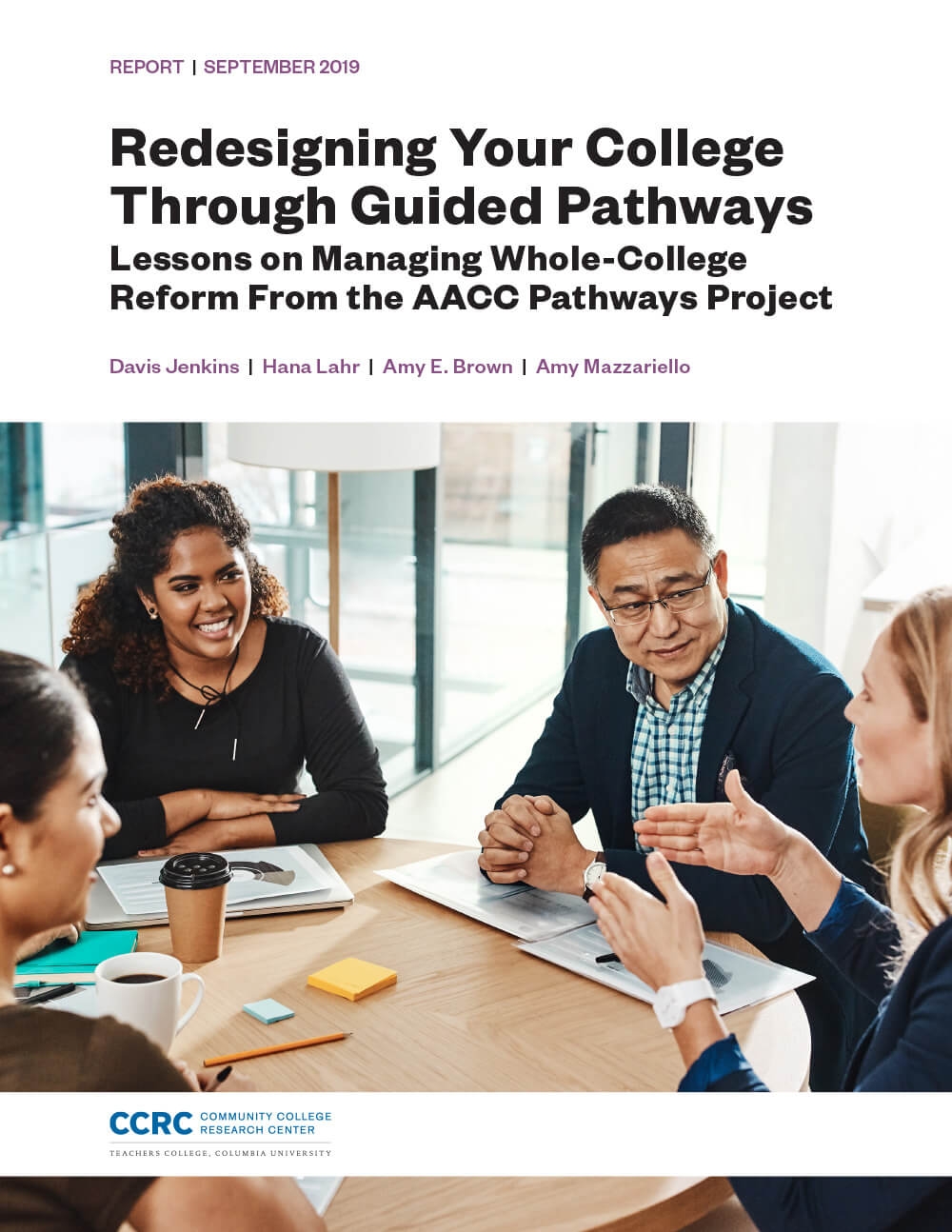
More than 300 colleges across the country are implementing guided pathways reforms, all of them facing unique challenges and circumstances as they take on whole-college redesigns. This report, based on fieldwork CCRC conducted at eight of the 30 colleges in the first cohort of the American Association of Community Colleges (AACC) Pathways Project, describes how institutions are managing the broad-based transformation of programs, student services, and related support systems involved in guided pathways reforms. In doing so, it offers guidance for others seeking to transform their institutions using the guided pathways model.
Although the eight colleges in the study varied in terms of size, geography, and student demographics, there were striking similarities in their overall approach to planning and implementing guided pathways. Reforms at all eight colleges can be thought of in four phases:
- laying the groundwork for whole-college redesign,
- introducing guided pathways to the college community,
- supporting collaborative planning and implementation, and
- sustaining and institutionalizing student success reforms.
The authors describe how the colleges approached each phase of the guided pathways change-management process and offer recommendations for replicating their successes and avoiding pitfalls. Overall, whole-college change is most effective when stakeholders from all levels of the institution are involved in planning and implementing guided pathways reforms. It is also important for those leading the reforms to acknowledge that the college itself creates barriers to student success and to engage the college community in working collaboratively to identify and address those barriers.
Accompanying the report is a suite of in-depth case studies describing how five of the colleges managed the process of institutional transformation. The case studies focus on steps college leaders took to build consensus and steer their campuses toward scaled guided pathways practices.
- From Pockets of Excellence to Engaged Innovation at Scale: Guided Pathways Reforms at Cuyahoga Community College
By engaging faculty and staff from across the college in decision-making related to student success, Cuyahoga Community College in Cleveland (also known as Tri-C) has established guided pathways practices at scale that few colleges nationally have succeeded in implementing. College leaders introduced guided pathways not as a wholly new reform but as a framework for enhancing and connecting Tri-C’s ongoing student success efforts. - Wild Thinkers: Linn-Benton Community College’s Creative and Collaborative Approach to Guided Pathways Reforms
Linn-Benton Community College in northwest Oregon took a grassroots approach to guided pathways implementation, allowing ample time for faculty and staff to exercise their creativity in deciding how to tailor the guided pathways model to reflect the college’s assets and priorities. Leaders sought to ensure the college community viewed guided pathways not as a project but as a cultural transformation, with its president observing that “if you change the culture, the systems will follow.” - Collaborating to Break Down Barriers to Student Success: Guided Pathways Reforms at San Jacinto College
Redesign efforts at San Jacinto College, located in the Houston metropolitan area, focused on eliminating institution-created roadblocks to student success, with faculty and staff process-mapping the entire student experience to identify areas for improvement. Their reform work was facilitated by “Framework Fridays”—weekly forums for collaborative reflection and analysis, planning, and professional development. - Balancing Urgency and Patience: How Community College of Philadelphia Set the Pace for Guided Pathways Reforms
CCP’s leaders viewed reforms to improve student success as an ethical imperative, but they recognized that fostering meaningful, college-wide engagement in guided pathways redesign efforts would take time. By starting with agreed-upon problem areas, phasing in changes gradually, and building on existing practices, college leaders were able to gain faculty and staff buy-in for large-scale pathways reforms in the midst of collective bargaining negotiations. - Approaching Institutional Change With Clarity and Flexibility: Guided Pathways at Wallace State Community College
Leaders at Wallace State Community College, located in rural Alabama, conceived of guided pathways as the “glue” for the college’s student success initiatives, providing a framework for organizing reform efforts and mobilizing the college community to work toward shared goals. Their approach to implementing guided pathways was inclusive and transparent, with many opportunities for faculty and staff from across the college to collaborate to shape the reforms.
